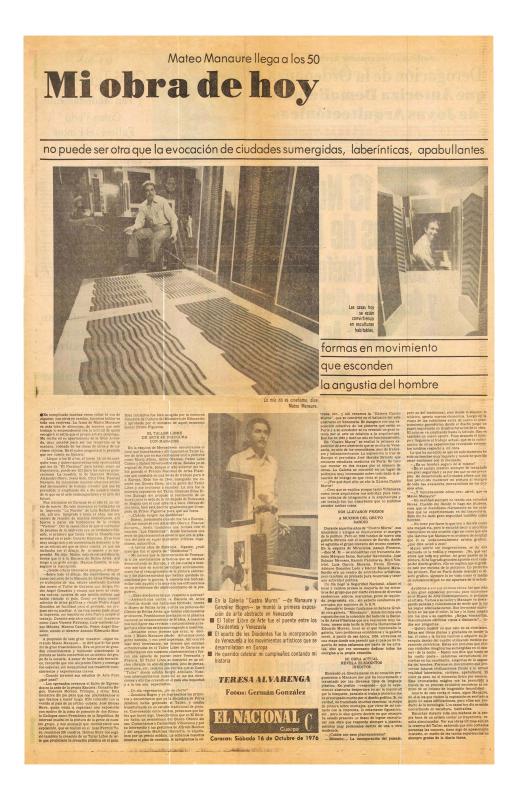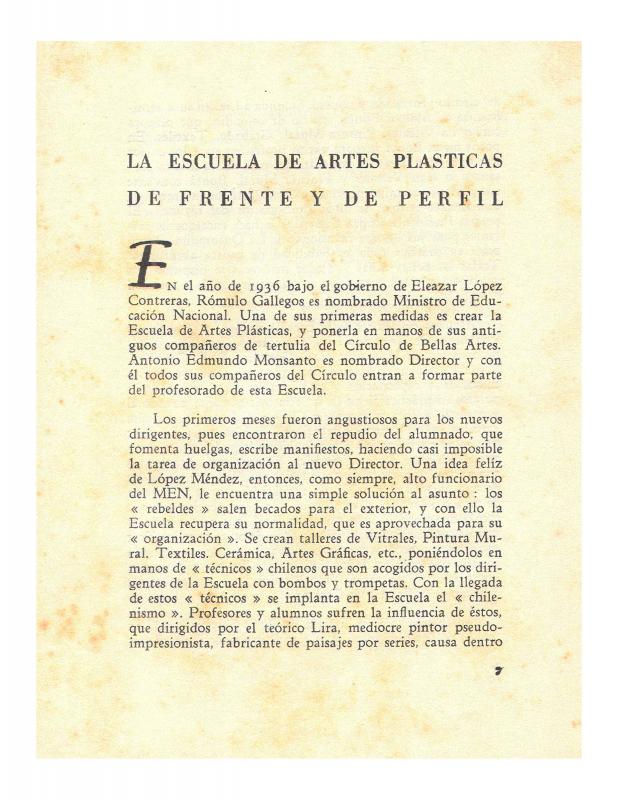In 1986, Venezuelan painter Mateo Manaure (b. 1926) moved his home and studio to a community near the Orinoco River and the town of Uracoa, where he was born. The painter published his decision—the result of a period of depression and of the desire to have more time to work on his art—in the Venezuelan press. This text, then, is confessional in nature; it attests to a decision that would greatly influence his work in the following years. Manaure explains that the need for isolation reflected his commitment to Venezuela and the landscape of its countryside, where he grew up. As such, the painter adheres to a conception of nature as a “place of purification”; by withdrawing into nature, as many artists of the past have before him, he was attempting to legitimate a superior art. In a sense, Manaure contrasts large cosmopolitan cities and the international art scene, on the one hand, and a reality that, though unknown, is very much his own, an exuberant and authentic tie to identity. He thus engages in self-criticism as his work moves from geometric abstraction to figurative art rich in local cultural references. While not against universalism, Manaure states that authentic creation is directly tied to native elements and references. During the coming period, Manaure would create the Orinoquia series inspired by the natural environment of the river region. In those works, he formulates a return to the origins and culture of his ancestors. That series would be exhibited in the Galería Armitano in Caracas in 1989. The painter would continue to work on that theme, producing the Ofrenda A Mi Raza series in 1992.
For other texts on Manaure’s work, see Víctor Guédez’s “La creación estético-visual en Mateo Manaure” (ICAA digital archive doc. no. 1155531); Roberto Guevara’s texts “Manaure y la inmensa noche” (doc. no. 1156411), “Manaure: Columnas en tierras movedizas” (doc. no. 1155301), and “Manaure y las Cuvisiones” (doc. no. 1156459); Perán Erminy’s “Las imágenes poéticas de Manaure” (doc. no. 1156523); Alfredo Boulton’s “Mateo Manaure en el Museo de Bellas Artes” (doc. no. 1157497); Gastón Diehl’s “Mateo Manaure” (doc. no. 1156491); Teresa Alvarenga’s article “Mi obra de hoy: Mateo Manaure llega a los 50 años” (doc. no. 1156427); Pedro Lhaya’s “Mateo Manaure o la autenticidad pictórica americana” (doc. no. 1156443); “La Escuela de artes plásticas de frente y de perfil” (doc. no. 813569">813569), a text by Manaure himself on the history of the Escuela de Artes Plásticas de Caracas (doc. no. 813569">813569); Gloria Carnevali’s “El color a través de Mateo Manaure” (doc. no. 1155499); and Alejo Carpentier’s ‘Letra y Solfa: Arte abstracto” on an exhibition of Manaure’s work held at Cuatro Muros gallery (doc. no. 1097108).












